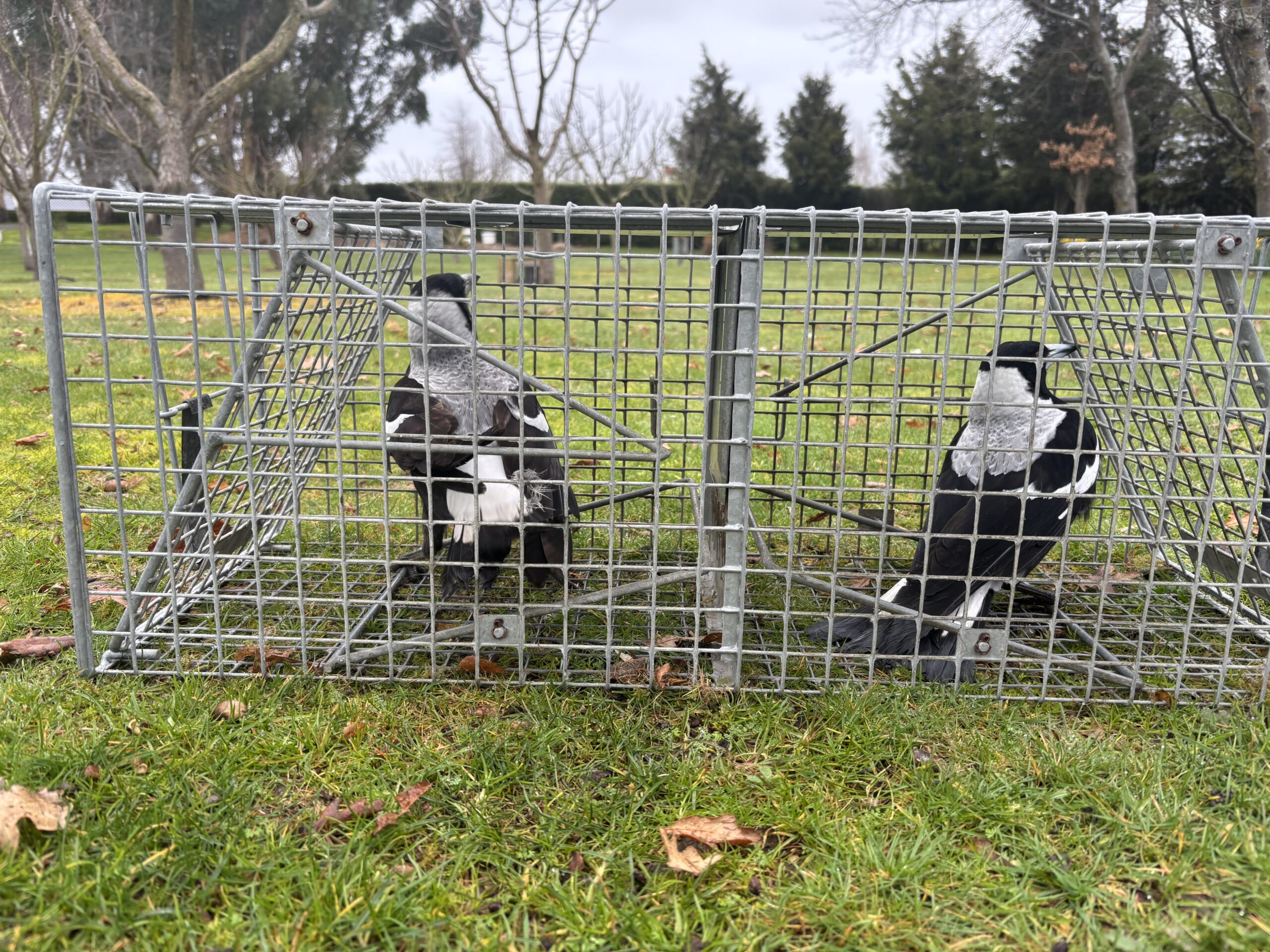Denis Glover’s famous poem helped to define New Zealand’s distinctive style of poetry.
Catherine Chidgey’s “Axeman’s Carnival” elevated the magpie to even greater levels of intelligence. Coupled with knowing how to use social media, Tama was a formidable foe.
Australian magpies (Gymnorhina tibicen) were introduced into New Zealand in the 1860s from Australia, to control agricultural insect pests. Over 546 were released in Canterbury between 1864 and 1870. Further releases of magpies were introduced to Kawau Island, Hawkes Bay and Wellington. They were initially protected, but are now widespread and considered an “Abundant Australian Introduction”.
Fine looking birds they may be, but they are also on the increase in Martinborough. They are very protective of their environment and are extremely aggressive, particularly during springtime when they are vying for mates and competing for precedence. Cyclists in particular well know the impact of a magpie’s beak on the back of the helmet. In some cases advice is given to paint eyes on the back of the helmet or wear sunglasses back to front.
They will repeatedly attack.
The impact on our native birds is noticeable. Magpie voices are strident and drown out the more melodious tui and bell birds in the early morning. They raid nests of native birds and eat fledglings. Their habit of flying in large groups, sometimes numbering as many as eight to ten, is intimidating. It is quite common for them to attack hawks, tui, kereru, and smaller birds.
Trapping can be effective. Traps with two or more compartments are used. One of these is the Laser trap. Dividing the centre of the trap is a mirror. Catching the call bird in the trap is the first challenge. With a call bird in the trap other magpies are curious. They observe, and the unwary are enticed into the empty compartment. The second magpie becomes the new call bird and the other is despatched.
Patience is required. Placing enticements of small cubes of fat leading up to the entrance is a tempting lure.
What is a flock of magpies called?
There are several names given to a group of magpies, but perhaps the most descriptive is “a parliament.”
The birds have earned this title from often appearing in large groups in the spring, looking stately and cawing at each other.



